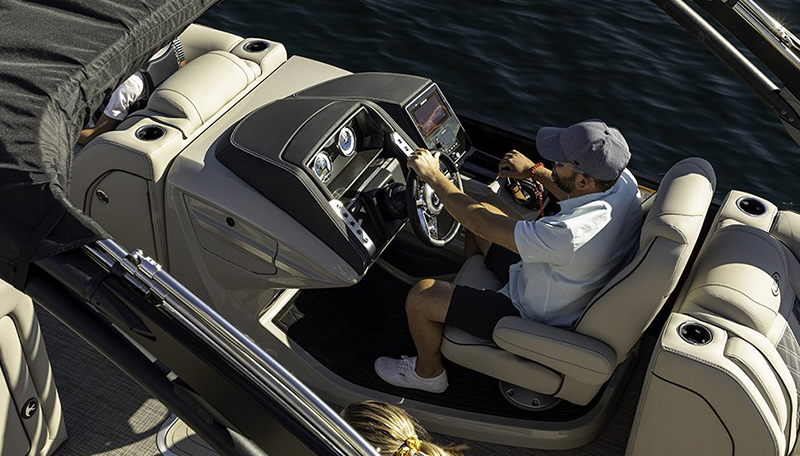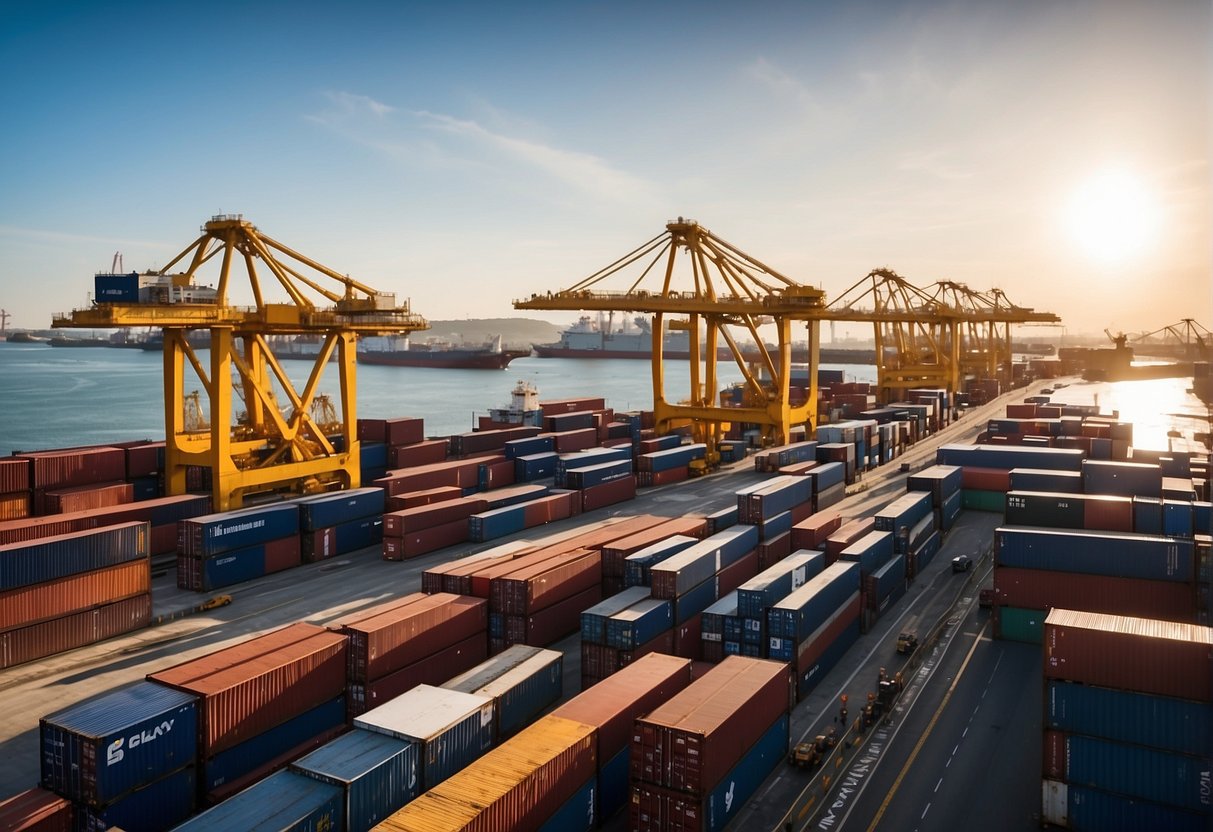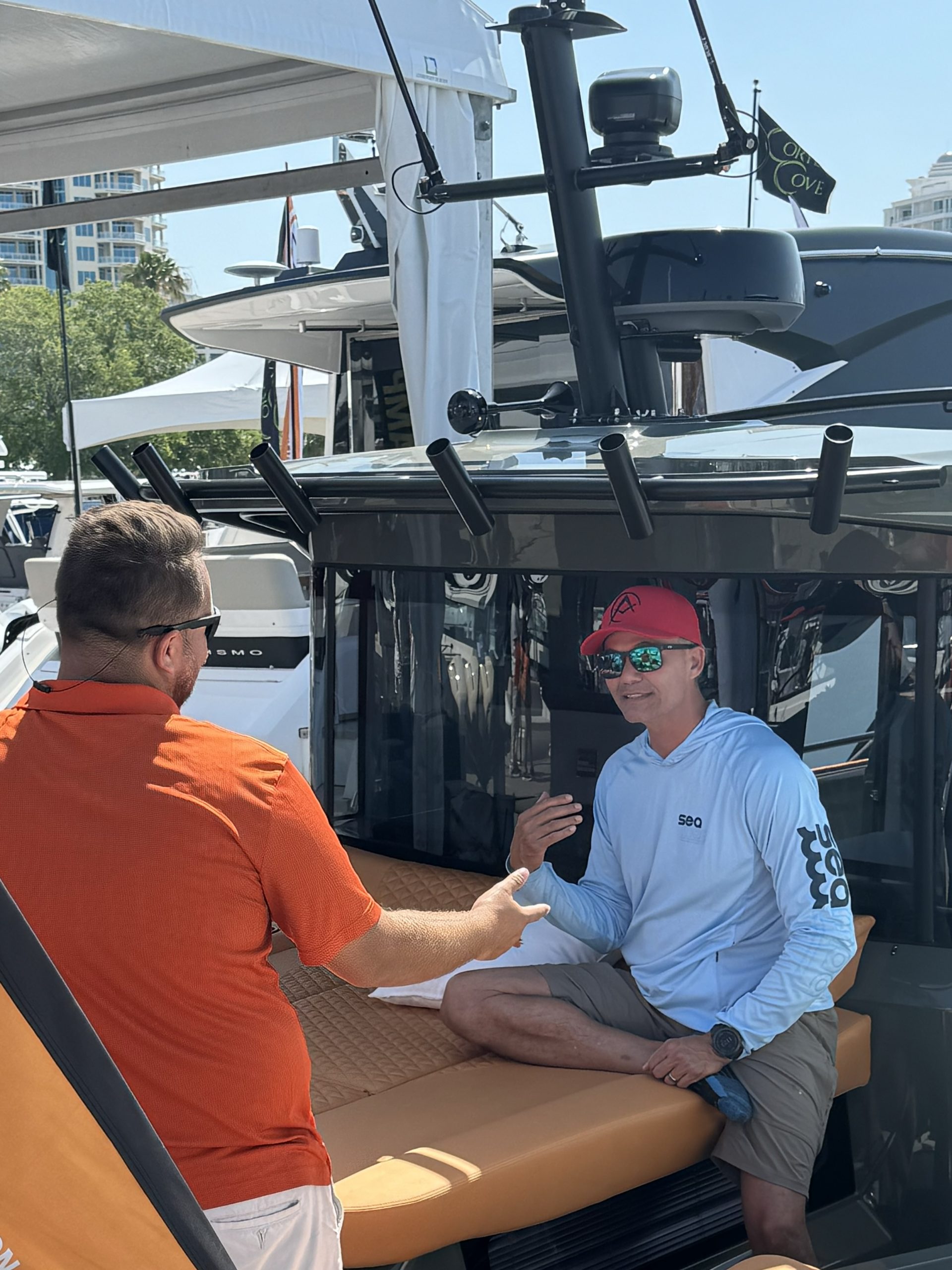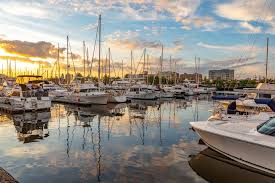2024 Best Outboard Engine Mods: Top Upgrades for Performance and Efficiency
As 2024 unfolds, boating enthusiasts seek to enhance their experiences with the latest in outboard engine modifications. Whether you're looking to boost performance, improve fuel efficiency, or integrate modern technology, there are plenty of options available.
The top modifications can significantly enhance both the power and efficiency of your outboard engine, ensuring a smoother and more enjoyable boating experience.
For those considering upgrades, the focus often lies on selecting the best brands and models that offer the highest return on investment.
From Honda's powerful BF350 V-8 to the popular electric alternatives like the Epropulsion Spirit 1.0 Plus, understanding what each option brings to the table is crucial.
Modifications not only enhance performance but also contribute to better fuel efficiency and reduced emissions, making your boat more eco-friendly.
Safety must not be overlooked when making these upgrades. Proper maintenance, weight reduction strategies, and choosing advancements that suit your boating style are paramount.
These enhancements ensure that your boat operates at its best, providing both excitement and peace of mind on the water.
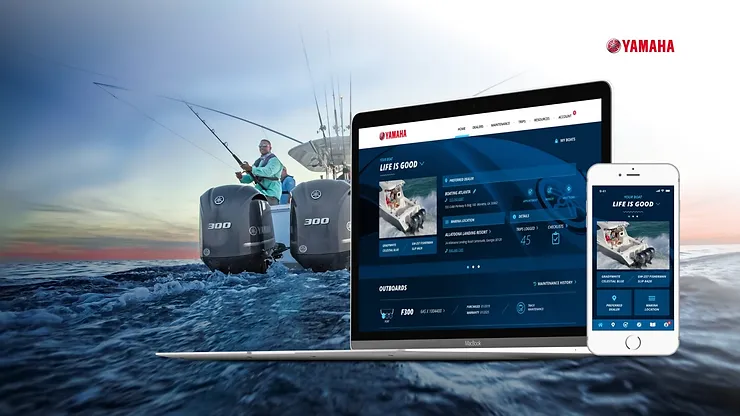
Yamaha Outboard App
The Yamaha Outboards app is a cutting-edge tool designed for boating enthusiasts, offering a seamless connection between your vessel and the powerful Yamaha outboard engines. The app provides a comprehensive suite of features that enhance the boating experience, from real-time monitoring of engine performance to maintenance scheduling and troubleshooting.
With its intuitive interface, users can easily access crucial data such as fuel efficiency, engine hours, and diagnostic information. This ensures that boat owners are always informed about the status of their engines, leading to better maintenance practices and, ultimately, more reliable performance on the water.

In terms of performance boost, the Yamaha Outboards app significantly contributes to optimizing engine functionality. By providing detailed insights into engine operations, the app allows users to make informed decisions about speed, fuel consumption, and overall engine health.
This real-time data helps in fine-tuning the engine settings for maximum efficiency and performance, resulting in a smoother and more powerful boating experience. Moreover, the app's predictive maintenance feature alerts users about potential issues before they become serious problems, thereby reducing downtime and ensuring that the engines are always operating at their peak. Overall, the Yamaha Outboards app is a vital tool for anyone looking to enhance their boating performance and ensure the longevity of their outboard engines.
Key Takeaways
- Top mods boost performance and efficiency.
- Choose reliable brands and models for upgrades.
- Safety and maintenance are critical.
Understanding Outboard Engine Basics
Outboard engines are essential for boating. They come in various designs, horsepowers, and engine types, influencing performance and fuel efficiency.
Outboard Motor Design and Functions
An outboard motor combines an engine, gearbox, and propeller. The engine is usually mounted at the back of the boat. Key parts include the powerhead, midsection, and lower unit.
- Powerhead: The main part of the engine, where fuel is burned to produce power.
- Midsection: Connects the powerhead to the lower unit and includes the driveshaft.
- Lower Unit: Houses the gearbox and propeller, transferring engine power to the water.
Good design ensures effective propulsion and steering. Technologies like variable valve timing and direct fuel injection improve power and efficiency.
The Role of Horsepower in Performance
Horsepower measures an engine's power output. It affects speed, acceleration, and the boat's handling capabilities.
- Higher horsepower: Provides greater speed and better performance in rough waters.
- Lower horsepower: More fuel-efficient and suitable for smaller boats or calm waters.
Choosing the right horsepower depends on the boat's size, weight, and intended use. Overloading a boat with too much horsepower can be dangerous and inefficient.
Comparing Two-Stroke and Four-Stroke Engines
Two main types of outboard engines are two-stroke and four-stroke engines.
- Two-Stroke Engines: Lighter and simpler. They deliver power with every crankshaft turn but require an oil-fuel mix, which can be less environmentally friendly.
- Four-Stroke Engines: More complex, providing power every other crankshaft turn. They run cleaner and more efficiently with separate oil and fuel systems.
Key differences:
- Maintenance: Two-stroke engines require more frequent maintenance.
- Environmental impact: Four-stroke engines are better for the environment with lower emissions.
Top Outboard Engine Brands and Models
The best outboard engines in 2024 come from well-known brands like Mercury Marine, Suzuki Marine, Yamaha, and Honda. Each offers unique features, power, and reliability, appealing to different boating needs.
Mercury Marine Innovations
Mercury Marine continues to lead in innovation with its 600hp V12 Verado. This powerful engine features a two-speed transmission and steerable gearcase. Another standout is the FourStroke range, known for fuel efficiency and low maintenance.
Mercury's 115 Pro XS is popular for its speed and acceleration, making it ideal for recreational and professional use. Their reliable engines suit various boating activities, from fishing to high-speed cruising.
Suzuki Marine's Powerhouses
Suzuki Marine excels with its DF350A, a 350-horsepower engine featuring dual propellers for better stability and efficiency. The DF300B, another top model, offers exceptional fuel economy and power.
Suzuki's Lean Burn Control Technology optimizes fuel consumption. For smaller boats, the DF20A provides reliability and ease of use.
Suzuki engines are trusted for their durability and advanced technology, making them a favorite among boaters who demand performance and efficiency.
Yamaha's Reputation for Reliability
Yamaha's outboard engines are renowned for their reliability. The Yamaha F300, a 300-horsepower engine, delivers smooth, quiet performance and excellent fuel efficiency.
The F25 is lightweight and portable, perfect for smaller crafts. Yamaha’s V MAX SHO series combines speed and power, ideal for fishing tournaments.
Known for their longevity, Yamaha engines are a top choice for those who value dependable performance and high resale value.
Their engines are designed to withstand harsh marine environments, ensuring peace of mind for boaters.
Honda Outboard Engines
Honda's outboard engines are celebrated for their innovative designs and fuel efficiency. The BF250, a 250-horsepower engine, offers quick acceleration and quiet operation.
Honda's BF350, their first V-8 engine, provides robust power and can run on regular fuel. The BF5 is perfect for smaller boats, offering portability and ease of use.
Boaters trust Honda for their advanced technology and eco-friendly operation. With a focus on reducing emissions and improving fuel economy, Honda continues to lead in creating efficient and environmentally friendly outboard engines.
Modifications for Enhanced Performance
Boosting outboard engine performance involves several key modifications. These can focus on increasing horsepower and torque, upgrading propulsion components, and adjusting fuel injection and ECU settings.
Each modification targets specific aspects to provide noticeable performance gains.
Increasing Horsepower and Torque
Enhancing horsepower and torque is crucial for better acceleration and top speed.
One effective modification is installing a performance exhaust system, which can improve airflow and increase engine efficiency.
Adding a supercharger or turbocharger can also provide significant power boosts by forcing more air into the engine.
Another method is upgrading the camshaft, which controls the engine’s valves.
High-performance camshafts can optimize valve timing for better airflow, enhancing both horsepower and torque.
All these upgrades should be considered carefully to ensure they match the engine's specifications and capabilities.
Upgrading Propulsion Components
Upgrading propulsion components directly impacts the boat's ability to convert engine power into movement.
One common upgrade is swapping the stock propeller for a high-performance propeller, which can offer better thrust and efficiency. Stainless steel propellers are often recommended due to their strength and durability.
Installing a jack plate can also improve performance. A jack plate allows for vertical adjustment of the engine, optimizing the propeller's angle and reducing drag.
Additionally, upgrading the lower unit to a higher-performance model can enhance overall propulsion efficiency by improving hydrodynamic flow.
Fuel Injection and ECU Tweaks
Modern outboard engines benefit greatly from advanced fuel injection and electronic control unit (ECU) tweaks.
Updating the fuel injection system can improve fuel atomization, leading to better combustion and more efficient power output.
Brands like Yamaha use variable camshaft timing to refine the combustion process.
ECU remapping is another powerful modification.
By adjusting the ECU settings, one can optimize fuel delivery, ignition timing, and other parameters to match performance modifications.
This can result in smoother acceleration and improved throttle response.
For the best results, these tweaks should be performed by a professional to ensure precision and reliability.
Improving Fuel Efficiency and Emissions
Optimizing your outboard engine for better fuel efficiency and lower emissions can enhance performance and reduce your environmental footprint.
Focusing on both eco-friendly modifications and fuel consumption reduction techniques can make significant improvements.
Eco-Friendly Modifications
Implementing eco-friendly modifications can significantly reduce emissions.
One effective method is upgrading to a fuel-efficient model. Newer engines often feature advanced fuel injection systems that optimize the air-fuel mix, reducing inefficient combustion.
Installing a catalytic converter can also lower harmful emissions by converting toxic gases like carbon monoxide into less harmful substances.
Additionally, using biofuels or cleaner fuels can reduce the carbon footprint of your boating activities.
Regular maintenance, such as cleaning the engine and replacing filters, ensures the engine runs efficiently and minimizes pollutant output.
Fuel Consumption Reduction Techniques
Reducing fuel consumption involves both technical adjustments and smart usage habits.
One practical approach is to use a high-quality propeller that matches your engine’s specifications, reducing the workload on the engine.
Trim adjustments also help by ensuring the boat moves efficiently in water, avoiding unnecessary fuel burn.
Routine maintenance is crucial; this includes regular oil changes, checking spark plugs, and ensuring the fuel system is clean.
Investing in digital fuel management systems can monitor and control fuel usage more precisely.
Another tip is to lighten the boat’s load to minimize energy required for movement, which directly impacts fuel consumption.
Weight Reduction Strategies
Reducing the weight of outboard engines can lead to improved performance and fuel efficiency. The following strategies focus on the use of innovative materials and finding the right balance between weight reduction and performance.
Material Innovations for Lighter Engines
Using new materials can significantly reduce the weight of outboard engines.
For instance, aluminum alloys are popular because they are lighter than traditional steel yet still strong. This swap reduces overall engine weight without sacrificing structural integrity.
Another material gaining popularity is carbon fiber. Known for its lightness and strength, carbon fiber can be used in various engine components. Its use in parts like propellers and engine casings can lead to substantial weight savings.
Composite materials are also making headway. These materials combine lightweight properties with durability, offering a balanced solution for those looking to reduce weight while maintaining excellent performance.
Balancing Weight and Performance
While reducing weight is crucial, it is equally important to maintain or enhance performance.
One approach is to use modern design techniques that ensure lighter engines do not compromise on power.
For example, engineers can optimize the shape of engine parts to improve efficiency while using less material.
Proper weight distribution is another key consideration.
By strategically placing lighter materials in high-stress areas, manufacturers can ensure that the engine remains balanced and performs effectively.
Testing and refinement are essential. Continuous testing helps identify which areas can afford weight reduction without losing performance. Models like the Yamaha VMAX SHO are examples of outboards that strike a good balance between weight and performance, making them popular among boaters.
Advancements in Electric Outboard Motors
Electric outboard motors have made significant strides, with new technologies and improved efficiency. They offer compelling alternatives to traditional gas engines, especially for those looking for quiet and eco-friendly options.
Electric Outboard Motor Technologies
One of the key advancements in electric outboard motors is the transverse flux motor technology. This innovation enhances efficiency and performance.
The new models, such as the Mercury 20e and 35e, incorporate this technology to deliver better power output.
Additionally, the Vision Marine E-Motion 180E stands out. With a 180 horsepower rating, it offers heavy-duty performance suitable for larger boats.
Another example is the Epropulsion Spirit 1.0 Plus, known for its compact and lightweight design, making it easy to install and maneuver.
Battery life and charging times have also improved. Modern batteries offer longer usage between charges, and rapid charging options make them more practical for extended trips.
Comparing Electric and Gas Outboard Options
When comparing electric and gas outboard motors, efficiency is a major factor.
Electric motors, like the ones in Mercury’s line-up, are designed to be more efficient over their lifespan. They convert more energy into propulsion, reducing waste.
Gas outboard motors still lead in terms of initial power output and are easily refueled. However, electric options like the E-Motion 180E can offer competitive performance with less maintenance.
Cost comparisons favor gas motors due to lower upfront costs, but electric motors can save money over time due to lower operational and maintenance expenses. The environmental impact is another consideration. Electric motors produce no emissions, making them a greener choice.
Maintaining and Servicing Outboard Engines
Proper maintenance and servicing are crucial for the durability and longevity of outboard engines. Using quality replacement products and seeking professional support can significantly enhance engine performance.
Routine Maintenance for Longevity
Regular maintenance ensures outboard engines run efficiently and reliably. Key tasks include:
- Changing the oil: This should be done every 100 hours of operation or at least once a year.
- Inspecting the propeller: Remove and check for any damage or debris that might be wrapped around the shaft.
- Flushing with fresh water: After each use in saltwater to prevent corrosion.
- Checking the fuel system: Inspect fuel lines for cracks or leaks and replace filters regularly.
- Lubricating moving parts: This prevents wear and tear on cables, connections, and other components.
Sticking to a maintenance schedule helps avoid costly repairs and extends the engine’s life.
Choosing Quality Replacement Products
Using high-quality replacement products is essential for maintaining engine performance. For fuel filters, oil, and other critical components, choose items that meet or exceed the manufacturer's specifications.
Key products to consider:
- OEM parts: Original Equipment Manufacturer parts ensure compatibility and quality.
- Marine-grade lubricants: These are designed to withstand harsh marine environments and reduce friction efficiently.
- High-quality spark plugs: These ensure better ignition and fuel efficiency, which are critical for engine performance.
Investing in quality products may cost more upfront but reduces the likelihood of failure and improves durability.
Professional Service and Support
While routine maintenance can be performed by the boat owner, professional services are sometimes necessary. Certified technicians offer expertise that can identify potential issues that aren’t always visible.
Benefits of professional service:
- Diagnostic tools: Professional shops have specialized tools to diagnose complex issues.
- Scheduled servicing: Regular check-ups by a certified dealer can prevent major problems.
- Warranty adherence: Using authorized service centers often ensures that warranties remain valid.
Relying on professional service when needed ensures comprehensive care for outboard engines, enhancing their performance and extending their lifespan.
Boat Integration and Modification
Modifying outboard engines for optimal boat integration can greatly enhance performance. Key considerations include ensuring compatibility with boat types and optimizing for maneuverability and speed.
Ensuring Compatibility with Boat Types
Choosing an outboard engine that matches the boat type is crucial.
For example, Yamaha’s 2024 outboard engines are designed to ensure this compatibility for a variety of boats, including trailer boats ranging in size from 4.2m to 5.2m. Different shaft lengths are available to suit diverse boat designs, securing a seamless fit and performance enhancement.
Examining the engine’s specifications, such as the bore, stroke, and compression ratio, can further ensure the engine is well-suited for the boat's requirements.
This attention to detail prevents potential mismatches that could lead to suboptimal performance or mechanical issues. Always cross-check these technical aspects to maintain harmony between the engine and the boat.
Optimizing for Maneuverability and Speed
Enhancing maneuverability and speed is essential for achieving top-notch performance.
The Epropulsion Spirit 1.0 Plus is a lightweight electric motor, which aids in easy installation and better boat control.
Compact designs like this enable increased maneuverability, especially in tight or crowded water spaces.
Focused tuning and modifications, such as gear reduction adjustments or aftermarket upgrades for models like the 3.2L 300XS Optimax, can further push performance limits.
Furthermore, engines with a good power-to-weight ratio, such as the smaller 2.5L Optimax engines weighing around 430 lbs, can significantly boost speed without compromising control. These optimizations make for a smooth and powerful boating experience.
Safety Considerations and Best Practices
When modifying outboard engines, ensuring safety and regulatory compliance is paramount. This involves incorporating advanced safety features and adhering to emissions standards set by relevant authorities.
Incorporating Safety Features
Modern outboard engines come equipped with several built-in safety features that can prevent accidents and improve operational security.
One essential component is the kill switch. This safety device automatically shuts off the engine if the operator falls overboard, preventing potential runaway boats and injuries.
Engine modifications should also include automatic shut-off systems for detecting overheating or excessive vibrations, minimizing damage and hazards.
Another critical feature is the installation of fire suppression systems, especially in high-powered engines, to combat engine fires efficiently.
Routine maintenance and regular inspections are vital in confirming these safety features function correctly. Always ensure to follow the manufacturer’s guidelines when upgrading or replacing safety components.
Regulatory Compliance and Emissions
Adhering to regulatory compliance is mandatory when modifying outboard engines. This includes both safety regulations and emissions standards.
Many regions enforce stringent emissions regulations to minimize environmental impact. For instance, the U.S. Environmental Protection Agency (EPA) has specific requirements for the emissions produced by marine engines.
Modifying engines to include eco-modes can help reduce overall emissions. These modes adjust the engine’s performance to operate more efficiently, reducing fuel consumption and exhaust output.
Additionally, using compliant materials and parts during modifications ensures the engine meets legal standards, avoiding fines and legal issues.
Always refer to local regulations and seek professional consultation to ensure compliance before implementing any engine modifications.
Frequently Asked Questions
This section addresses common inquiries regarding modifications to outboard engines to enhance performance, horsepower, speed, and efficiency.
What are the top performance upgrades for Yamaha 2-stroke outboard engines?
Upgrades for Yamaha 2-stroke outboards often include high-performance carburetors and aftermarket reeds. A performance exhaust system can also enhance overall engine output.
Installing high-energy ignition components may improve throttle response and power.
How can I safely increase the horsepower of my Suzuki outboard?
Safely increasing horsepower in Suzuki outboards involves upgrading the ECU to a performance model. High-flow air intake systems and performance propellers can also be beneficial.
Regular maintenance and using recommended lubricants ensure the engine handles the extra power effectively.
What modifications can be made to improve the speed of a 50 hp 2-stroke Mercury outboard?
To improve speed in a 50 hp 2-stroke Mercury outboard, consider installing a low-drag propeller. Lightweight engine components, like a flywheel, can also boost speed.
Fine-tuning the carburetor for optimal fuel-air mixture enhances performance further.
Which performance mods are recommended for smaller outboard engines?
For smaller outboard engines, aftermarket propellers designed for speed or fuel efficiency are recommended. Performance spark plugs and lightweight engine components can also make a noticeable difference.
Modifying the ECU for better fuel mapping helps optimize performance.
What steps can be taken to maximize the speed and efficiency of an outboard motor?
Maximizing speed and efficiency involves a combination of factors. Regular maintenance, including propeller tuning and fuel system cleaning, is crucial.
Upgrading to performance propellers and ensuring optimal fuel-air ratios through carburetor or EFI adjustments also play key roles.
Are there specific 2-stroke outboard enhancements that provide significant power gains?
Significant power gains in 2-stroke outboards can be achieved through performance exhaust systems and high-flow intake filters.
Replacing stock reeds with performance reeds increases airflow, boosting power.
High-energy ignition coils enhance combustion efficiency, further increasing power.
Charlie is Editor-in-Chief of Sea Magazine


